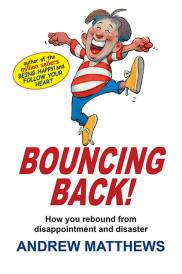Commissioner Calls for Sexual Health Campaigns
Commissioner Calls for Sexual Health Campaigns
The NSW Commissioner for Children and Young People, Megan Mitchell, is calling for increased sexual health education for young people as survey data shows a lowering in the age of first sexual activity among teenagers.
"In line with international trends, there has been a fall in the age of onset of first sexual activity in Australia, exposing young people to a higher risk of unplanned pregnancy and sexually transmitted infections," Ms Mitchell said.
The data, released today in the Commission's online databook, A picture of NSW children, shows that in NSW in 2008, 32% of Year 10 students (average age 15 to 16) reported having had sex, with only 63% reporting that they used a condom the last time they had sex.
"We know that properly targeted public health messages and sex education in schools can be effective. Just look at the results of measures to reduce smoking and alcohol consumption among children," Ms Mitchell said.
"Since 1984, the proportion of children aged 12 to 17 years who smoke has fallen from 27% to 9%. The proportion who reported having drunk alcohol in the last 12 months also fell, from 72% to 56%.
'Public health campaigns targeted at young people can be effective in reducing harmful behaviour.
'I encourage the NSW Government to continue to build on its excellent public health work, particularly in delivering effective messages about sexual health for young people.
"Involving young people in developing these messages will be a key to their success" Ms Mitchell said.
Also available in A picture of NSW children, the survey data shows that: The birth rate among females 19 years and younger decreased substantially over the 15-year period to 2006.
There were 904 recorded births to 15 to 17 year olds in 2008, or 1.7 births per 1,000 females in this age group, of which Aboriginal females had nine times the birth rate of non-Aboriginal females.
A picture of NSW children was produced in collaboration with the UNSW Social Policy Research Centre and can be accessed online at www.picture.kids.nsw.gov.au. It brings together information about the lives of more than 1.6 million children in NSW, from a range of major data sources.
MORE
- Chiropractic Myths & Truths
- Gerard Fogarty Arthritis and Knee Replacement...
- Kym Ellery The ELLERY Eyewear Collection Interview
- Dr Ross Walker The Real Modern Killers Interview
- Shelly Horton Hay Fever Help Interview
- Sebastian VanVeenendaal Royal Rehab's Beach...
- Abigail Koch Family Private Health Insurance...
- Monique Cashion Organic Awareness Month Interview
- Dr Bill Harris Omega-3s Interview
- The Top Ten Health Myths Busted
- Professor Bolin IBD Management a Life-Long...
- Anthia Koullouros Best Cold and Flu Defence...
- Leprosy in NSW
- Julie-Anne Mitchell Go Red for Women Healthy...
- Insight into Chronic Disease Hospitalisations...
- Jeff Chan Mobile Phone Allergies Interview
- How to Conquer Bad Winter Health Habits
- Bad Cholesterol Behind Cancer Spreading In Body
- New Screening Test Recommended To Help Prevent...
- Support For The Rural Nurse Workforce A...
- Kathy Nielsen Ovarian Cancer Australia National...



